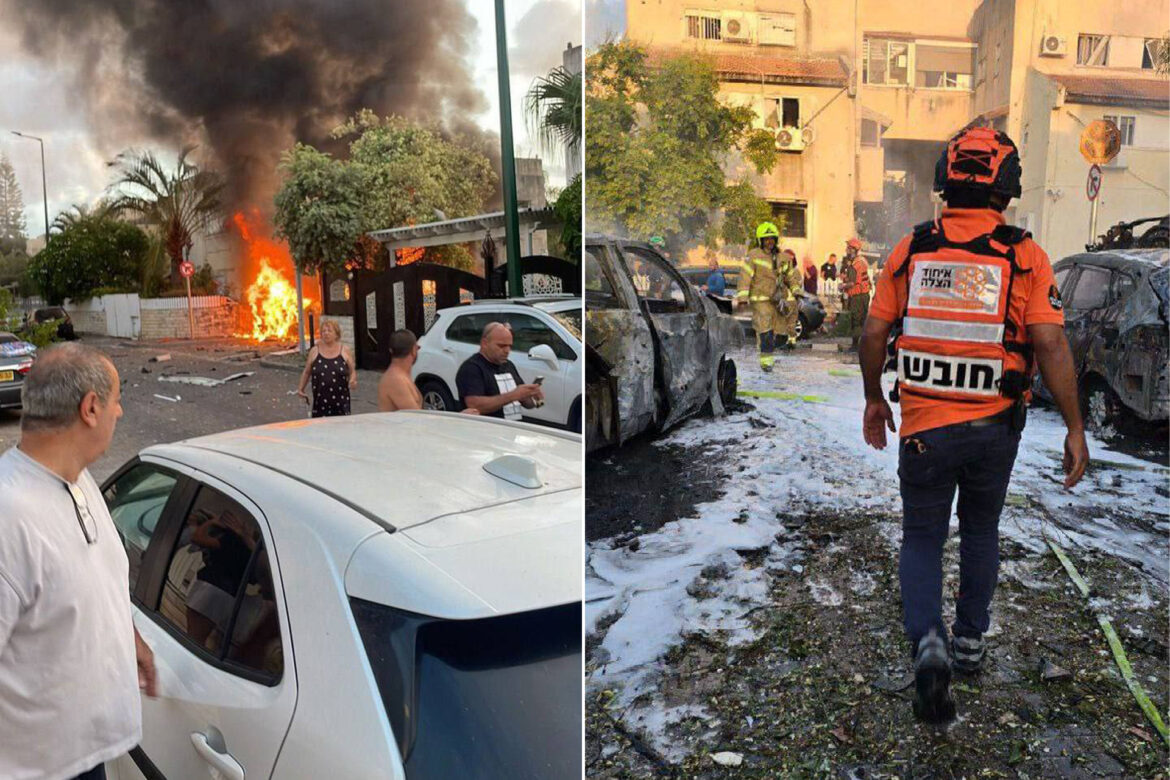The Spanish newspaper El Pais said that Hezbollah’s escalation of its military pressure following the assassination of 16 of its members, including two senior commanders, expands the circle of psychological warfare against Israel, which has not known stability since the beginning of the war, even if the party’s missiles and drones have only caused about 50 deaths since the beginning of the “Al-Aqsa Flood” battle.
The newspaper said that the flags raised by residents of northern Israel on their damaged buildings to hide the damage from view are more like an optical illusion through which they try to escape the harsh reality.
Hezbollah fired about 100 rockets in an initial response to the assassination of its leader, Ibrahim Aqil, and 15 other party members, launching the “Battle of Open Accounts.” A number of rockets caused heavy losses in the town of Kiryat Bialik, near Haifa, in northeastern Israel.
It’s like an earthquake zone.
Joseph, who came from Tel Aviv to Kiryat Bialik to check on his mother, Zahava, spoke of a deep anxiety that pervades the place.
“We have been living in a rough and tumble situation for a year,” Joseph told El Pais. “It’s like living in a place that is constantly hit by earthquakes.”
The Spanish newspaper is surprised that there were no casualties in Kiryat Bialik in light of the great destruction caused by the Hezbollah attack, but it points out something that may explain the low number of deaths from those attacks, which is that many homes in northern Israel are equipped with fortified rooms that residents resort to when warned of missile or drone attacks.
She confirms that the warning messages that the residents receive through various media are almost non-stop, especially in the north, noting that Israel has evacuated about 60 thousand residents of the settlements near the border strip with Lebanon since the beginning of the war, and their return has become one of the official goals of the war.
A huge burden
According to Professor Amaziah Baram of the School of Middle Eastern and Islamic Studies at the University of Haifa, the war has placed a huge burden on Israel, dividing its population into two halves: one half supports a ceasefire in Gaza that includes a prisoner exchange and at least a withdrawal from various areas of the Strip, and the other half supports Prime Minister Benjamin Netanyahu, who refuses to make concessions and does not want a ceasefire or even the return of those held in Gaza in exchange for the release of Palestinian prisoners.
Amazia Baram calls for a complete withdrawal from the Strip with the return of the detainees because it is a “moral duty after Israel betrayed them,” and says that this is the way to end Hezbollah’s attacks, which are trying to support the Islamic Resistance Movement (Hamas) and Gaza.
The newspaper quotes a statement by the Israeli Prime Minister yesterday in which he said that 101 Israeli prisoners are still in the hands of the resistance factions in Gaza, and he believes that half of them have died.
She said that tens of thousands of residents of the Gaza Strip and the north who were forced to leave their homes are distributed in different areas of Israel, and Netanyahu promised that they would return to their homes, but this return does not seem imminent.
The newspaper notes that these residents live with their eyes fixed on Gaza and the north, and their eyes on the various means of communication through which they receive warning messages.



